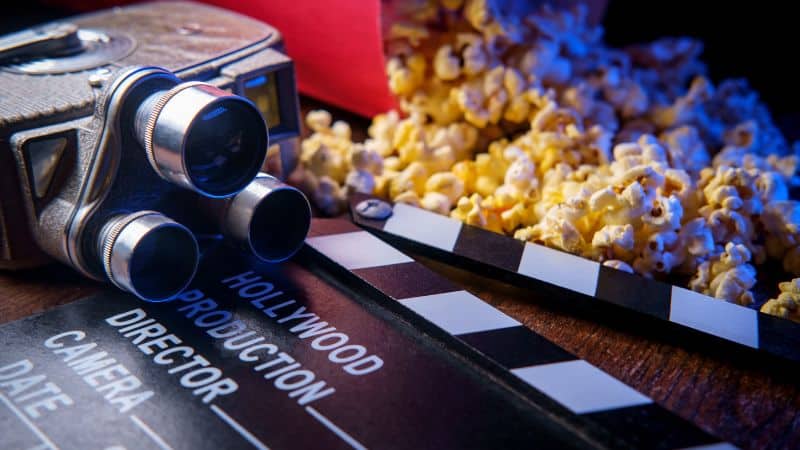Anúncios
The journey from the pages of a book to the silver screen encapsulates the essence of storytelling in two distinct formats, presenting both an art and a challenge. This exploration focuses on the realm of best books turned into movies—a category emblematic of a unique collaboration between authors, screenwriters, directors, and actors. These adaptations often emerge as cultural landmarks, lauded for their ability to blend the depth of written narrative with the visual allure of cinema.
The process of translating a book into a film entails navigating a myriad of critical decisions—what to retain, what to alter, and what to omit. This delicate balance extends beyond mere fidelity to the source material; it necessitates an embrace of the cinematic realm’s potential. Superlative adaptations demand a profound comprehension of the original text coupled with a creative vision to reimagine it for a new medium. This involves expanding certain scenes for visual impact, condensing others for pacing, and at times, reenvisioning characters or elements to suit the cinematic milieu.
Within this discourse, we delve into noteworthy examples of best books turned into movies, scrutinizing how these cinematic renditions have captivated audiences worldwide. We dissect the elements underpinning their success, the hurdles encountered by filmmakers, and the reverberations these adaptations have on both viewers and the literary works from which they stem. Whether traversing the enchanting realms of fantasy novels or delving into the stark realities of historical fiction, the metamorphosis of these literary treasures into cinematic gems opens new avenues of appreciation, rendering these tales accessible to a broader audience.
Deciphering the Adaptation Process
The process of adapting a book into a movie entails making crucial decisions regarding what to retain, revise, or discard. This intricate undertaking poses a challenge, requiring a profound understanding of both mediums. The overarching objective is to uphold the essence of the book while fashioning a film that stands on its own merits.
Critical Elements in Adaptations – Best books turned into movies
- Plot Modifications: Essential alterations to suit the cinematic narrative.
- Character Refinement: Streamlining character arcs and traits to accommodate the pacing of a film.
- Visual Realization: Translating descriptive prose into captivating visual imagery.
- Pacing and Structure: Adjusting the narrative rhythm of the book to sustain cinematic tension.
Best Books Adapted into Films – Case Studies
“To Kill a Mockingbird”: A Timeless Masterpiece
Anúncios
Harper Lee’s literary classic, brought to life by director Robert Mulligan in 1962, stands as a poignant testament to storytelling that deftly intertwines societal issues with personal evolution. The film’s adept portrayal of themes such as racial injustice and moral maturation renders it a cornerstone in conversations surrounding exemplary book-to-movie adaptations.
“The Lord of the Rings”: An Epic Cinematic Odyssey
Peter Jackson’s monumental endeavor to adapt Tolkien’s magnum opus stands as one of the most ambitious cinematic undertakings in history. The trilogy’s triumph lies in its unwavering fidelity to Tolkien’s richly imagined world, augmented by groundbreaking visual effects and compelling character arcs.
The Impact of Successful Adaptations
Effective transitions from book to film often result in heightened exposure and sales for the original literary works. Moreover, they introduce these narratives to fresh audiences who may not have engaged with the source material previously. Additionally, they enrich the cultural discourse by amplifying themes and discussions from the books through a dynamic, cinematic lens.
Top Questions About Best Books Made into Movies

1 – What attributes make a book well-suited for adaptation into a movie?
A promising candidate typically boasts a compelling narrative, intricately developed characters, and a vividly evocative setting conducive to cinematic visualization. Additionally, the presence of a pre-established audience base, comprised of fervent fans of the book, can significantly influence its suitability for adaptation.
2 – How are books selected for cinematic adaptations?
Books are typically chosen for adaptation based on several factors, including their existing popularity, potential marketability, thematic depth, and cinematic appeal. At times, filmmakers themselves are inspired by specific literary works and actively seek the rights to adapt them into films.
3 – Who determines the degree of divergence between a movie and its source material?
The screenplay writer, in collaboration with the director and producers, usually determines the extent of deviations from the original book. These decisions hinge on various factors such as the film’s target audience, time constraints, and the storytelling techniques inherent to the cinematic medium.
4 – Do authors participate in the filmmaking process?
The level of author involvement varies. Some authors take an active role, potentially even penning the screenplay or providing consultancy services, while others prefer to maintain a more hands-off approach and entrust filmmakers with the interpretation of their work.
5 – What are some challenges encountered when adapting a book into a film?
Principal challenges include the necessity to condense the narrative to fit a manageable runtime, the selection of which elements to omit or modify while preserving the essence of the original text, and the task of meeting the expectations of the book’s fervent fanbase.
In Conclusion
After all, what are the Best books turned into movies? The transition from the pages of a book to the silver screen is a complex and intricate art, demanding a blend of creativity, reverence for the source material, and a profound comprehension of the distinct demands of both literature and cinema. The finest examples of books transformed into movies not only breathe new life into beloved narratives but also enhance our understanding and appreciation of these stories, enriching our experiences as both readers and viewers.
As the film industry continues its exploration and adaptation of literary treasures, audiences can anticipate a wealth of captivating tales awaiting transformation, promising to captivate and enthrall in equal measure within the realms of both literature and cinema. With each adaptation, the boundary between the written word and visual storytelling is blurred, offering audiences a compelling synthesis of two distinct yet harmonious art forms.





